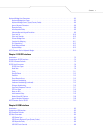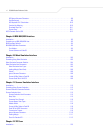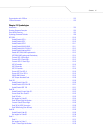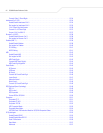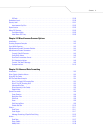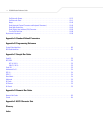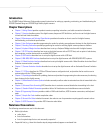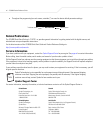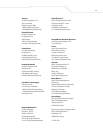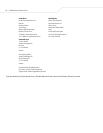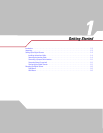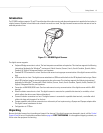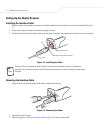
xv
Introduction
The DS 6608 Product Reference Guide provides general instructions for setting up, operating, maintaining, and troubleshooting the
DS 6608 Standard Range and DS 6608 High Density digital scanners.
Chapter Descriptions
• Chapter 1, Getting Started provides a product overview, unpacking instructions, and cable connection information.
• Chapter 2, Scanning describes parts of the digital scanner, beeper and LED definitions, and how to use the digital scanner
in hand-held and hands-free modes.
• Chapter 3, Maintenance and Technical Specifications provides information on how to care for the digital scanner,
troubleshooting, and technical specifications.
• Chapter 4, User Preferences provides programming bar codes for selecting user preference features for the digital scanner.
• Chapter 5, Decoding Preferences provides programming bar codes for selecting digital scanner preference features.
• Chapter 6, Keyboard Wedge Interface describes how to set up a Keyboard Wedge interface with the digital scanner.
• Chapter 7, RS-232 Interface describes how to set up the digital scanner with an RS-232 host, such as point-of-sale devices,
host computers, or other devices with an available RS-232 port.
• Chapter 8, USB Interface describes how to set up the digital scanner with a USB host.
• Chapter 9, IBM 468X/469X Interface describes how to set up the digital scanner with IBM 468X/469X POS systems.
• Chapter 10, Wand Emulation Interface describes how to set up the digital scanner with a Wand Emulation host when Wand
Emulation communication is needed.
• Chapter 11, Scanner Emulation Interface describes how to set up the digital scanner with an Undecoded Scanner Emulation
host.
• Chapter 12, 123 Scan describes the 123Scan PC-based scanner configuration tool, and provides the bar code to scan to
communicate with the 123Scan program.
• Chapter 13, Symbologies describes all symbology features and provides the programming bar codes necessary for selecting
these features for the digital scanner.
• Chapter 14, Miscellaneous Scanner Options includes commonly used bar codes to customize how data is transmitted to the
host device.
• Chapter 15, Advanced Data Formatting (ADF) describes how to customize scanned data before transmitting to the host.
• Chapter A, Standard Default Parameters provides a table of all host devices and miscellaneous scanner defaults.
• Chapter B, Programming Reference provides a table of AIM code identifiers, ASCII character conversions, and keyboard
maps.
• Chapter C, Sample Bar Codes includes sample bar codes.
• Chapter D, Numeric Bar Codes includes the numeric bar codes to scan for parameters requiring specific numeric values.
• Chapter E, ASCII Character Sets provides ASCII character value tables.
Notational Conventions
The following conventions are used in this document:
• Bullets (•) indicate:
• action items
• lists of alternatives
• lists of required steps that are not necessarily sequential.
• Sequential lists (e.g., those that describe step-by-step procedures) appear as numbered lists.



